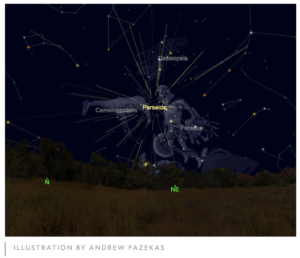Saturday in Whitewater will be cloudy with a high of twenty-seven. Sunrise is 7:25 AM and sunset 4:33 PM, for 9h 07m 55s of daytime. The moon is a waning gibbous with 87.1% of its visible disk illuminated.
Today is both the one thousand five hundred sixteenth and the fifty-seventh day.
On this day in 1777, American forces under the command of Gen. Washington repulse a British attack at the Battle of the Assunpink Creek near Trenton, New Jersey.
Recommended for reading in full —
David E. Sanger, Nicole Perlroth, and Julian E. Barnes report As Understanding of Russian Hacking Grows, So Does Alarm:
On Election Day, General Paul M. Nakasone, the nation’s top cyberwarrior, reported that the battle against Russian interference in the presidential campaign had posted major successes and exposed the other side’s online weapons, tools and tradecraft.
“We’ve broadened our operations and feel very good where we’re at right now,” he told journalists.
Eight weeks later, General Nakasone and other American officials responsible for cybersecurity are now consumed by what they missed for at least nine months: a hacking, now believed to have affected upward of 250 federal agencies and businesses, that Russia aimed not at the election system but at the rest of the United States government and many large American corporations.
Three weeks after the intrusion came to light, American officials are still trying to understand whether what the Russians pulled off was simply an espionage operation inside the systems of the American bureaucracy or something more sinister, inserting “backdoor” access into government agencies, major corporations, the electric grid and laboratories developing and transporting new generations of nuclear weapons.
At a minimum it has set off alarms about the vulnerability of government and private sector networks in the United States to attack and raised questions about how and why the nation’s cyberdefenses failed so spectacularly.
Andrew Fazekas writes of 10 spectacular stargazing events to watch in 2021:
MARCH 9 AND 10: QUADRUPLE FORMATION
An impressive cosmic huddle will greet sky-watchers around the globe as four worlds cluster in the southeast morning sky. Mercury, Jupiter, and Saturn will all appear in near-perfect alignment, while the nearby crescent moon will frame the trio of planets. Each planet will appear as a brilliant dot, with Mercury being the faintest and Jupiter the brightest—all easily visible to the naked eye.
Through binoculars, stargazers will be able to spot Jupiter’s four largest moons, while a small telescope will reveal Saturn’s rings. Because of Earth’s position relative to Mercury and the sun, only half of the innermost planet’s disk will appear illuminated to us. As a result, Mercury will look like a miniature version of the quarter moon through the telescope.
….
AUGUST 12 AND 13: PERSEID METEOR SHOWER PEAKS
Every mid-August, Earth travels through a cloud of debris shed by the comet Swift–Tuttle, producing a flurry of shooting stars in the skies as small meteors burn up in the upper atmosphere. This is the Perseid meteor shower, and it can produce up to 60 shooting stars an hour in a typical year.
This year promises to be particularly good for the Perseids, since the shower’s peak will coincide with a dark, moonless sky. A thin crescent moon will set during the early evening, ushering in excellent viewing conditions later in the night. The Northern Hemisphere is favored since the meteors always appear to radiate from their namesake constellation Perseus, which lies close to the horizon this time of year for those in far southern latitudes.
To get the best view of this celestial fireworks show, scout out a viewing spot with as little light pollution as possible. Even from a suburban backyard or park, dozens of shooting stars should be visible each hour under clear skies.
Lawmakers Evacuate as Earthquake Shakes Slovenian National Assembly:



